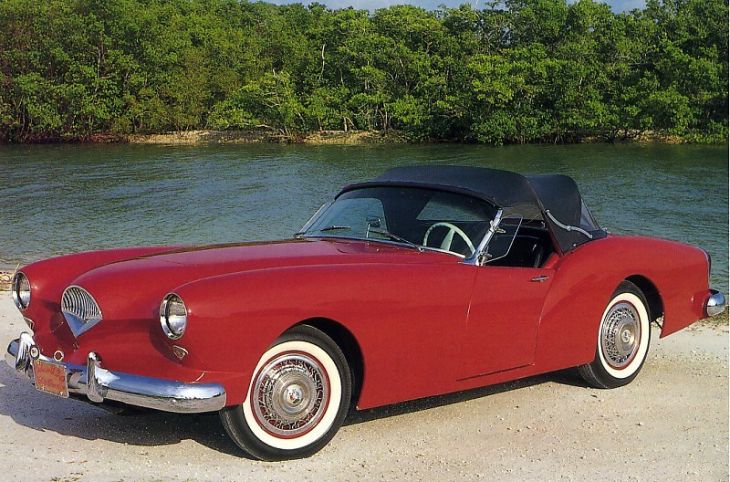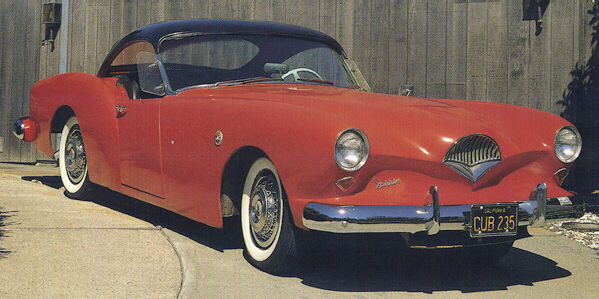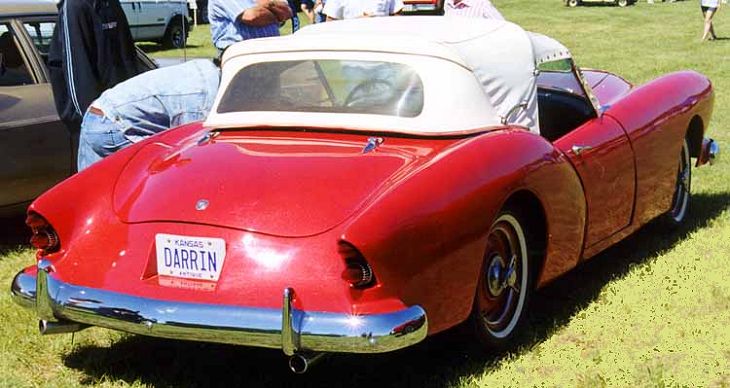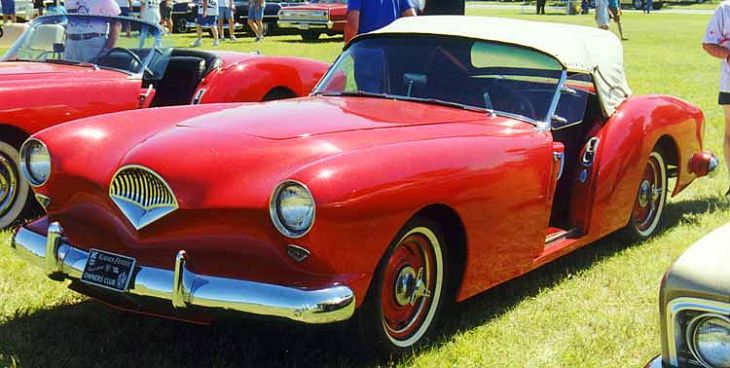Description
The Kaiser Darrin 161 Roadster was one of the most distinctive and daring creations of America’s postwar automotive era—a car that embodied beauty, ingenuity, and the restless spirit of design experimentation that flourished in the early 1950s. Built by Kaiser Motors in 1954 and officially designated the DKF 161, it was the first American production sports car with a fiberglass body and the only one ever to feature sliding doors that disappeared into the front fenders. More sculpture than machine, the Darrin 161 Roadster was a work of art that stood apart from everything else on the road.
The car was the brainchild of Howard “Dutch” Darrin, one of America’s most imaginative and independent designers. Darrin had made his name creating elegant custom-bodied cars for Packard and other luxury marques before the war. When Kaiser-Frazer began producing cars after 1945, Darrin worked as a consultant and later conceived a lightweight, fiberglass-bodied two-seater that would give the company a halo model—something to rival the new Chevrolet Corvette or the imported European sports cars that were exciting American enthusiasts.
Henry J. Kaiser was initially reluctant to approve the project, believing sports cars were too limited in appeal to be profitable. But Darrin persisted, and according to company lore, Kaiser’s wife Alyce saw the prototype, fell in love with its beauty, and persuaded her husband to build it. Production began in 1954, and though only 435 examples were ever completed, the Darrin 161 Roadster became one of the most original and iconic designs of its generation.
The Darrin 161 was built on a modified version of the compact Henry J chassis, chosen for its light weight and simple, proven construction. Power came from the Willys “Hurricane” F-head inline-six engine, displacing 161 cubic inches (2.6 litres) and producing around 90 horsepower. The engine was paired with a three-speed manual transmission, with optional overdrive available for relaxed highway cruising. This powertrain gave the car smooth, reliable performance and a top speed of around 95 miles per hour—modest figures, but adequate for a car designed more for style and grace than for outright speed.
The fiberglass body was revolutionary for its time. The Darrin 161 Roadster was actually the first American production car to feature a fiberglass body, debuting just before the Corvette reached full-scale production. The use of the material allowed Darrin to realize complex, flowing shapes that would have been prohibitively expensive in steel. The body’s sweeping curves, delicate front fenders, and recessed headlights gave the car an almost organic form, as though it had been sculpted rather than stamped. The trademark “Darrin dip” in the doors and the dramatic cutaway grille gave it an instantly recognizable face, unlike anything else on American roads.
But the most astonishing feature was the doors. Instead of swinging outward, they slid forward into pockets within the front fenders—a design solution that was both practical and theatrical. The doors made the car easier to enter and exit in tight spaces and became one of its defining mechanical innovations. No other production car, before or since, has used such a mechanism.
Inside, the Darrin 161 Roadster was as refined and minimalist as its exterior was flamboyant. The cabin featured seating for two, trimmed in leather or high-quality vinyl, often in contrasting colors to the bodywork. The dashboard was simple and symmetrical, fitted with clear round gauges and chrome accents. A three-spoke steering wheel, floor-mounted gear lever, and low cowl created an intimate, driver-focused cockpit. The windshield, made of curved glass, was remarkably thin and elegantly framed, enhancing the car’s low-slung, open-air character.
On the road, the Kaiser Darrin was smooth, light, and surprisingly agile. The unibody-like fiberglass shell kept the weight down, while the 100-inch wheelbase and independent front suspension provided a composed, balanced ride. Steering was precise, and the car handled with confidence on winding roads. The F-head six delivered steady torque and a pleasant exhaust note, making the Darrin as enjoyable for relaxed cruising as it was for spirited weekend drives. Although it couldn’t match the power of European sports cars or the later V8-powered Corvette, the Darrin 161 compensated with grace and individuality.
The car’s visual appeal was undeniable. With its long hood, tapering tail, and delicate proportions, it looked exotic—more Italian or French than American. The wide-mouthed grille seemed to smile, the chrome trim was restrained and elegant, and the proportions were nearly perfect. When painted in soft pastel tones such as Champagne Ivory, Pine Tint Green, or Yellow Satin, the car looked light and alive, perfectly in tune with the optimistic mood of early-1950s America.
Despite its beauty and innovation, the Darrin 161 Roadster arrived at an inopportune time. Kaiser Motors was already in financial difficulty, and production delays combined with the car’s high price—around $3,700—limited its appeal. For comparison, a new Corvette cost slightly less, yet offered a more powerful engine and a more familiar name. Only 435 Kaiser Darrins were ever built before the company ceased automobile production later in 1954.
After production ended, Dutch Darrin himself bought several unsold cars and reworked them in his California workshop, fitting some with supercharged or Cadillac V8 engines. These modified examples became prized by enthusiasts and demonstrated the car’s potential had it been better supported by its parent company.
Today, the Kaiser Darrin 161 Roadster is celebrated as one of the most beautiful and collectible American cars of its time. Its combination of fiberglass construction, sliding doors, and timeless design make it a milestone in automotive history. Restored examples are admired not only for their rarity but for their artistry—the way they capture an era when designers dared to experiment with form and function in equal measure.
The Kaiser Darrin 161 Roadster remains a testament to the creativity and courage of Dutch Darrin and the boldness of Kaiser Motors. It was a car that defied convention and refused to blend in—a dream car made real. In its graceful lines, innovative spirit, and quiet confidence, it stands as one of the most elegant expressions of mid-century American design and one of the finest examples of what can happen when imagination takes the wheel.




